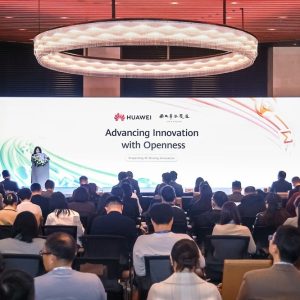
The UK government has ordered a second quantum simulator from French IT consultancy Atos. The Quantum Learning Machine, capable of simulating up to 41 qubits, will be installed at the high-performance computer research hub The Hartree Centre, where the first quantum simulator is already in place. It allows developers to build quantum algorithms for multiple frameworks.

The machine cost £385,000 including three years of support and maintenance, providing a learning resource that can simulate the behaviour of quantum computers. It is designed to help companies prepare for when true quantum computers are available in the coming decade.
Demand for access to the existing machine prompted the new purchase due to the “large quantities of users wanting access”. It has advanced quantum hardware modelling capabilities allowing users to optimise quantum algorithms on any targeted quantum hardware.
It is capable of physics-based realistic qubit noise simulation and optimisation of quantum software for real quantum processors when quantum computing technology becomes economically viable.
The machine uses is based on an Atos BullSequana X800 supercomputer and allows for quantum algorithms that use the gate, annealing and analog models. These are different approaches to applying qubits to perform a computation.
The gate model is the most common and flexible, based on the similar complex to classical computing where quantum operations are applied to qubits in a specific order to perform a computation. The annealing model is based on the concept of quantum annealing, where the global minimum of a function is found. This is ideal for solving optimisation problems.
Quantum simulator enables multiple language models
The model creates a quantum machine that mimics the behaviour of another quantum system, such as the energy levels of an atom, the behaviour of a material, or the dynamics of a chemical reaction. It can provide a more accurate simulation but is harder to control than other models.
The Quantum Learning Machine was launched by Atos in 2017, based on techniques developed by the company to model “quantum noise”. This allowing much more realistic simulations of current quantum hardware which often suffer from fidelity problems when making calculations.
Atos says the machine is perfect for companies working out the best approach to quantum computing, creating a universal programming environment, avoiding vendor lock-in with the current quantum hardware.
It provides access to multiple quantum programming languages and allows programmers to build their own algorithms on any current quantum framework, and adapt to future frameworks. In its marketing material for the machine, Atos says it will allow organisations to move beyond high-performance computing with quantum offering a new paradigm that “will solve critical problems in all industries” including manufacturing, defence and financial services.
It will be installed alongside the four petaflop Scafell Pike Bull Sequana X1000 supercomputer already available at the Hartree Centre at Daresbury Laboratory. The facility houses a number of high-performance computers accessible to businesses including the Bull Atos Nvidia DGX1 Max-Q system. This is also known as Jade 2 and is operated by the University of Oxford.






